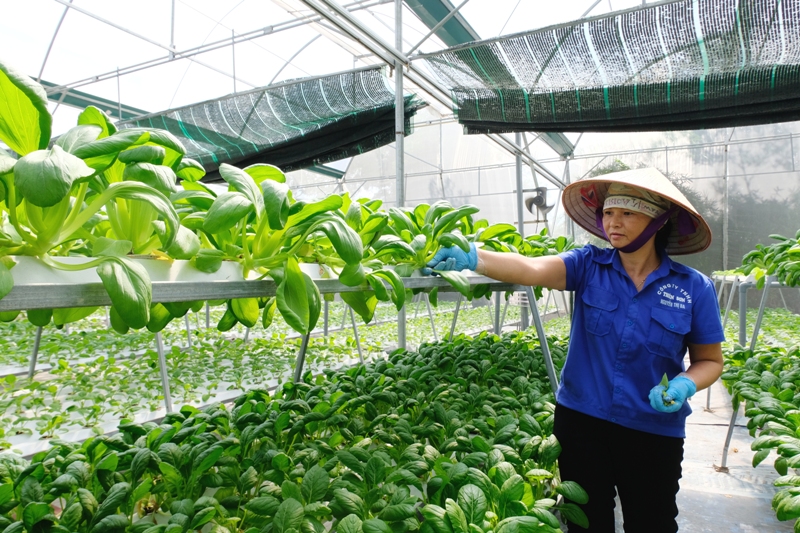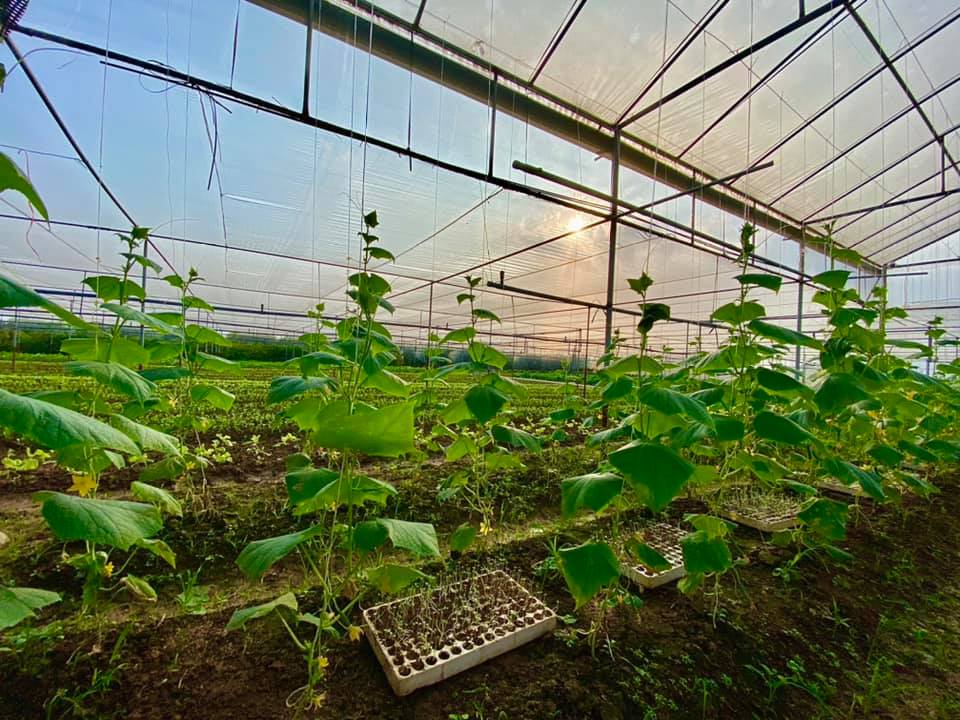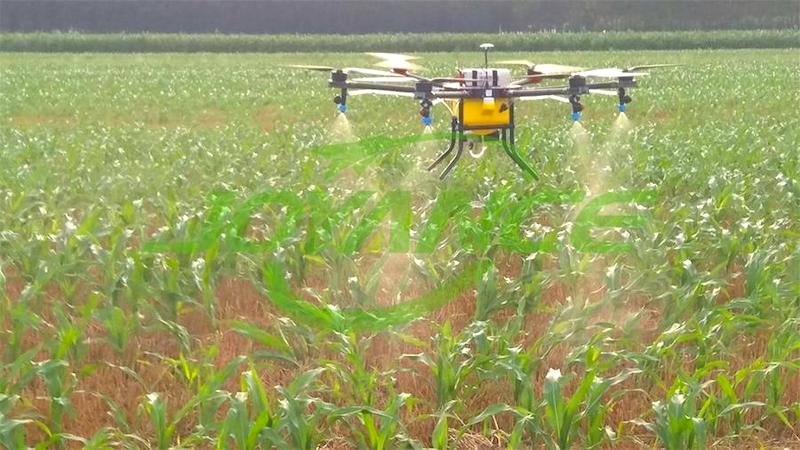Sustainable agricultural transformation flourishes on Hanoi's outskirts
Chuong My District has developed a large number of efficient production models through the persistent implementation of the digital transformation program.
The district has achieved initial successes with the digital transformation program, which will serve as the basis for the gradual establishment of a modern, competitive, and sustainable agricultural production system.
Effective models
| Agricultural production at Soc Son District, Hanoi. Photo: Trong Tung |
In Trung Cao Village (Trung Hoa Commune, Chuong My District), Le Huu Dien's family grows more than 300 Dien pomelo trees on about 2 hectares of hillside. To irrigate the crop, Dien digs ponds and spends over VND50 million (US$2,024) on a remote-controlled water-saving irrigation system via smartphone software.
In addition, the family has switched to using organic fertilizers and biopesticides instead of NPK and chemicals. As a result, their pomelos are now sold in supermarkets at twice the price of conventionally grown ones.
"The key to making a good living from farming is to move from manual production to automation," Dien emphasized.
At the Chuc Son Clean Vegetable and Fruit Cooperative (Chuong My District), members have used the iMetos weather alert application and eGap digital technology on 17.8 hectares of land to grow vegetables, tubers and fruits, according to Hoang Van Tham, its director.
| Chuc Son Clean Vegetable and Fruit Cooperative has installed a weather monitoring system to serve agricultural production. Photo: Chuc Son Cooperative |
He explained that the iMetos weather alert system helps control production, such as adjusting planting schedules and responding to changing weather conditions. The eGap digital technology allows the cooperative to electronically trace the origin of each household's vegetable garden and orchard.
The transformation has boosted production and quality, and the cooperative's products have found their way into school canteens and large supermarkets. The selling price remains stable compared to traditional market consumption, according to Tham.
He added that the cooperative continues to invest in perfecting synchronized digital transformation in production and establishing connections for sales through e-commerce platforms.
"In the future, the cooperative will continue to spend money on temperature and humidity control and lighting systems in cultivation areas," he said.
| Chu Tam farming zone in Gia Lam District. Photo: Chu Tam Clean Vegetable Co-operative |
Other cooperatives involved in rice, vegetable, and flower production in Dong Phu, Thuy Huong, and Nam Phuong Tien communes have installed surveillance camera systems in their fields. These cameras help provide real-time information on seed planting, fertilization, maintenance, and production processes, according to the district's economic division. The cameras record and store real-time information about the entire production chain, and consumers can verify this information through image extraction.
Among them, the Thuy Huong Agricultural Cooperative has operated automatic temperature control and automatic sprinkler systems for orchid cultivation, while livestock farms in Lam Dien, Dong Son, and Thanh Binh communes use automatic cooling systems and automatic feeding and watering control for livestock.
"In addition to applying digital transformation in traceability, many farmers, cooperatives, and businesses in Chuong My District also use the Internet to gain knowledge, share production and business experience in high-tech agriculture, and find customers," said Tong Van Thai, head of the district's economic affairs division.
| Hi-tech agricultural production in Hanoi. Photo: Tran Anh/The Hanoi Times |
Digital transformation in the agricultural sector has shown positive results in the early stages. However, its implementation on the ground still faces many challenges. Digital transformation models are currently small-scale and the application of digital technology is fragmented.
This is due to the lack of investment funds for technology infrastructure and the low level of information technology literacy among farmers. Cooperative leaders and commune officials in the district felt that additional mechanisms and policies are needed to promote the strong and widespread diffusion of digital transformation efforts.
Nguyen Dinh Hoa, chairman of the district's People's Committee, said that in October this year, the district issued a digital transformation plan to 2025, with a vision for 2030 in all areas. In terms of agricultural production, the district will mobilize resources to upgrade modern and synchronized digital technology infrastructure, establish an agricultural data system, encourage digitization of production, and seek product integration and transparency through a QR code scanning system.
In addition to these measures, the district government will continue to refine policies for appropriate and timely digital transformation in agriculture. It will also promote communication on the need and benefits of digital technology applications in agricultural management, production, and consumption. The district will enhance training and capacity building to improve access to policies and integrate digital technology into production, contributing to the building of a modern and sustainable agricultural sector.
Currently, the district is working with telecom operator Viettel Hanoi to focus on building infrastructure and digital transformation in electronic payments, with the goal of eliminating cash transactions in wet markets.


.jpg)










